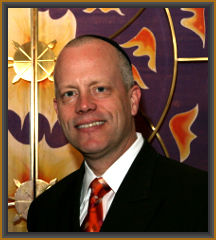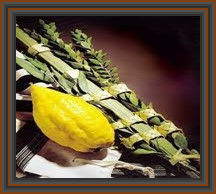
 |
September 17, 2021 (11 Tishre 5782) The Joys of Sukkoth Dear Friends, I hope this correspondence finds you in good health and enjoying the holiday season. Yasher Koach (may what you just did be a source of strength) to all of you for participating with us during the High Holidays, during which we had a great, albeit, yet again, different experience. At various points during Yom Kippur, we had almost one hundred people in-person at Fort Lee High School, as well as over one hundred people on Zoom! I hope that Yom Kippur was a truly meaningful experience for you. After the serious reflections demanded by the Yamim Noraim (the holidays of Rosh Hashanah and Yom Kippur), this upcoming week, we transition to the joyousness of the holiday of Sukkoth. Sukkoth is the only holiday on which we are commanded to be happy. Our tradition, through the interpretation of its symbols, suggests two possible pathways to achieving the aforementioned instructed bliss. In addition to the custom of building a temporary structure, or Sukkah, the holiday is marked by the holding together of what are called the four species: the Lulav (palm branch), the Etrog (citron), the Aravah (willow) and the Hadas (myrtle). Each of these species is referenced in the Book of Leviticus. Understanding these symbols helps us to achieve the fullness of joy.  According to our tradition, the four species represent either four aspects of each of us, individually, or four different types of people. The binding of the four together symbolizes either our desire to be fully present before God, individually, or our desire to bring together all different types of members of our community, under God’s protection. Midrash suggests that the four species represent four different types of Jews. The Etrog has a good taste and a good fragrance. It represents a person with both wisdom (Torah learning) and good deeds. The Hadas has a good fragrance but is inedible. It represents a person who has good deeds but lacks wisdom. The Lulav is edible but has no smell. This represents the person with wisdom but without good deeds. The Aravah has neither taste nor smell. It represents a person with neither good deeds nor Torah learning. Holding them all together, teaches that we must look at all the Jewish people as a unit, working together. This recognition is basic to communal happiness because when we realize that we are all interconnected, we can be more patient and tolerant of others, leading us to group contentment. Another way to look at the Lulav and the other species is mentioned in "Sefer Bahir," a Kabbalistic work almost 2,000 years old. It describes the four species as four parts of a human being. The Etrog represents the heart, the seat of our emotions. The Hadas has leaves shaped like an eye. The Lulav represents the spine, from where our actions emanate. The Aravah represents the lips, our speech. To achieve happiness, one must use all of one’s faculties in unison. You cannot say one thing and feel another. We must unify our feelings, our actions, our speech, and our outlook. With all of these actions working together, we are well on the path to self-esteem, tranquility, and joy. May the upcoming Yuntif offer us the opportunity to experience the highest levels of personal joy enhanced by the joy of our community and congregation. Shabbat Shalom and Chag Sameach, Rabbi Eric L. Wasser, EdD
|